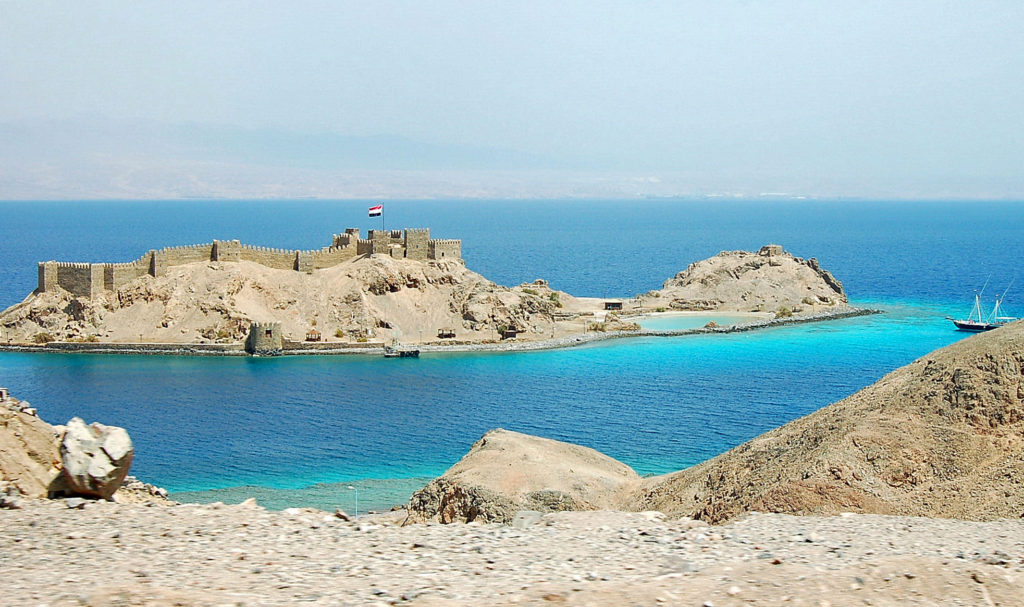
Pharaoh’s Island, located in the transparent turquoise waters of the Red Sea, features one of the best diving locations in the Middle East. Much less clear than the water is its history.
Pharaoh’s Island lies in the northwest corner of the Gulf of Aqaba, about 650 feet east of the Sinai Peninsula and four miles south of Egypt’s border with Israel. The tiny island, occupying about ten acres, is formed from granite outcroppings rising up to 60 feet above sea level. Because the island protects the waters between it and the Sinai coast from storms, it has long served as an anchorage. Some scholars claim that the island isEzion-Geber, a port mentioned six times in the Hebrew Scriptures, with little to support the claim except that no other port meets the Biblical description. With only slightly more evidence, some claim that the island gets its name from its occupation by Pharaoh Ramses III. The northern section of Pharaoh’s Island includes the reconstructed remains of a fortress believed to have been erected in1170 by Saladin, the Muslim leader who retook Jerusalem from the Crusaders in 1187. Some claim that Saladin enlarged a citadel built in 1116 by the Crusaders, but there is scant, if any, evidence that the Crusaders were ever on the island.
Some visitors to Pharaoh’s Island come to see Saladin’s citadel, from the top of which they can see Israel, Palestine, Jordan, Egypt and Saudi Arabia. One such visitor was Lawrence of Arabia, rafted to the island in 1914 while on an intelligence mission in the Sinai. Most modern visitors come to dive among the adjacent coral reefs, where they can swim with such colorful fish as the Picasso Triggerfish, named for the artist. Because of these table reefs, Israelis, presumably seeking to avoid honoring Egypt’s pharaohs, call it “Coral Island.”